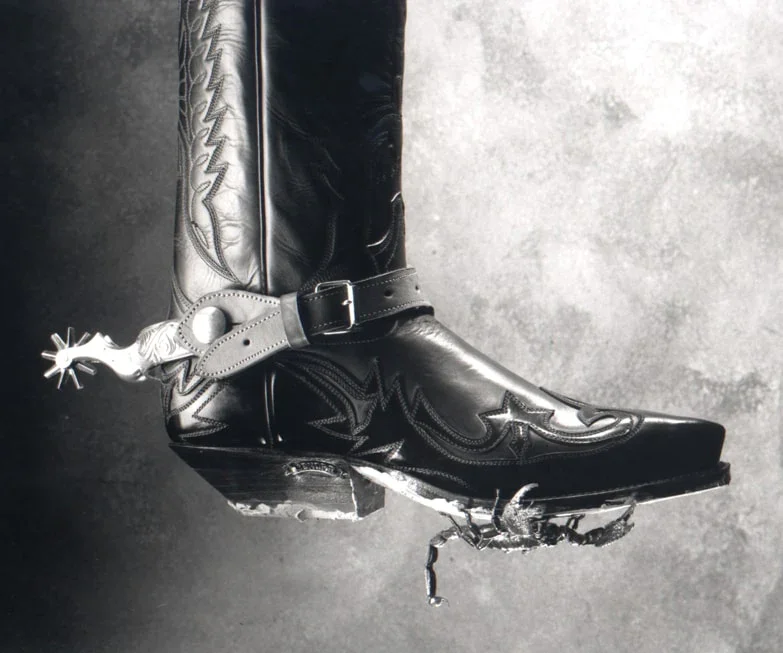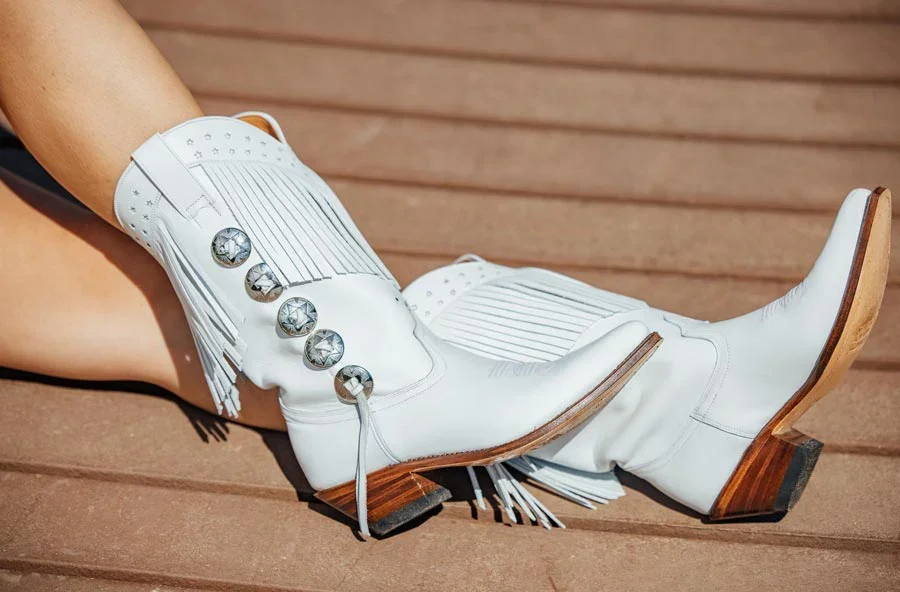Sendra Boots
The History of Sendra Boots – A Spanish Legacy in Leather
Sendra Boots is one of Spain’s most iconic bootmakers, known worldwide for its handcrafted leather boots that blend Western, biker, and traditional Spanish styles. The company’s story begins over a century ago:
Founded in 1913
Founder: Andrés Sendra
Location: Almansa, in the province of Albacete, Spain — a region with a deep tradition in shoemaking.
Sendra started as a small workshop producing durable boots for working people, with an emphasis on quality craftsmanship and sturdy leathers.
About Spanish Boots and Their Pointed Toe Design
Spanish riding boots, particularly those used in traditional Andalusian equestrian culture, are well known for their distinctively pointed toes. This design isn’t just aesthetic — it has historical, practical, and stylistic significance.
Origins of the Pointed Toe
The pointed toe can be traced back to Spain’s 16th–17th century cavalry traditions, where soldiers and noble riders wore elegant, narrow boots for both ceremonial and functional purposes. Over time, the shape evolved into a signature of Spanish equestrian style, especially in doma vaquera (cowboy dressage) and Alta Escuela (classical high school riding).
Functional Purpose
Ease of Stirrup Entry
The narrow, tapered toe makes it easier to slide the foot into traditional Spanish stirrups, which are often smaller than modern Western ones.Control and Contact
A pointed toe offers a more precise leg position, helping riders apply subtle pressure for cues — a key part of high-skill riding disciplines.Lightweight Feel
The toe shape reduces bulk and weight at the front of the boot, ideal for agile riding on Andalusian or Lusitano horses.
Stylistic Significance
The pointed toe is a hallmark of elegance and refinement, often paired with a tall shaft and slightly angled heel.
In Spanish fashion and parade boots, the toe may be even more exaggerated, with ornate stitching or tooled leather.
In modern times, this design has influenced flamenco, cowboy, and biker styles, especially in brands like Sendra, Valverde del Camino, and El Estribo.
Variations of the Spanish Pointed Toe
Classic Narrow Point – Sharp and long, often seen in high-dress riding.
Semi-Pointed (almond-shaped) – A more moderate version, often used in working equitation or casual wear.
Decorative Point – Extended toe boxes or upturned tips, found in fashion-forward or ceremonial boots.
Modern Relevance
Today, the pointed toe remains a symbol of Spanish craftsmanship and equestrian pride. Whether used for riding, festivals, or streetwear, it represents a bridge between tradition and style — combining function, history, and flair in one enduring silhouette.
Industrial Craftsmanship and Innovation
By the 1960s, Sendra began combining traditional handmade techniques with modern manufacturing, allowing them to scale production without sacrificing quality.
They also introduced Goodyear welt construction — a durable stitching method rarely used in mass-market boots, enhancing comfort and longevity.
Rise of the Western Boot in Europe
During the 1970s and 80s, Sendra saw growing demand for Western-style boots in Europe.
The company began designing boots influenced by American cowboy aesthetics, but retained their Spanish flair, using exotic leathers, intricate embroidery, and custom tooling.
Expansion into Biker and Fashion Markets
In the 1990s, Sendra expanded into biker boots, capitalizing on a trend for rugged, rebellious footwear.
Their signature styles — such as harness boots, engineer boots, and biker ankle boots — gained popularity across fashion, music, and motorcycling cultures.
A Global Brand with Spanish Roots
Today, Sendra exports to over 50 countries, while still making its boots in Almansa, using over 250 manual steps per pair.
Each pair reflects the brand’s heritage: blending Spanish leather tradition, Western styling, and rock 'n' roll attitude.
Signature Features
Goodyear welt construction
Natural leathers (cowhide, python, ostrich, etc.)
Hand-finished patinas
Distinctive decorative stitching and buckles




